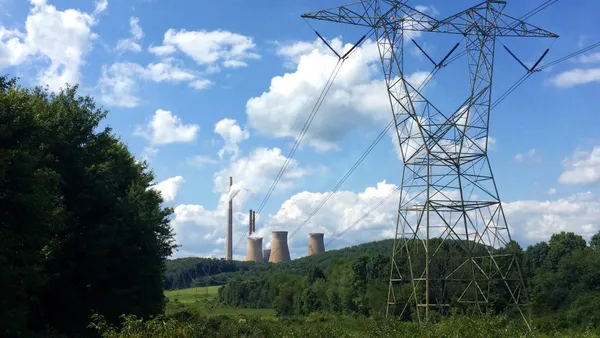Dive Brief:
- In a unanimous decision Tuesday morning, the U.S. Supreme Court ruled 8-0 that a controversial Maryland program to incentivize new in-state power generation should be thrown out because it intrudes on federal authorities' jurisdiction over wholesale energy markets.
- The consolidated case, Hughes v. Talen Energy Marketing, centered on a Maryland program that guaranteed income for new in-state power generation to ensure it cleared wholesale market auctions. Some utilities and the Obama administration argued the program artificially surpressed power prices, infringing on the Federal Energy Regulatory Commission's (FERC) exclusive authority over interstate wholesale markets.
- In a narrow decision, the justices left the door open for other state generation incentives, but said states may not "intrude on FERC’s authority over interstate wholesale rates, as Maryland has done here."
Dive Insight:
A coalition of states and industry interests spurred the high court to take the case last year, arguing that allowing a lower court decision that threw out the program to stand would endanger "dozens of state laws under which private parties are investing billions in needed generation plants, from clean-coal facilities in Illinois to offshore wind in Massachusetts," Greenwire notes.
State officials argued the program was simply aimed at ensuring a natural gas plant being constructed Maryland would later clear PJM market auctions, something they said was essential to ensure reliability and reasonable power prices for consumers.
Utilities, PJM and FERC, on the other hand, argued the state incentives were in direct conflict with PJM's Minimum Offer Price Rule (MOPR), which prevents market participants from offering a new resource into the capacity market at a price lower than the grid operator’s estimate of the resource’s competitive costs.
In the decision, the court attempted to draw a line between the Maryland program and other state generation incentive programs. Justice Ruth Bader Ginsburg wrote that not all state incentives for generation would infringe on FERC's wholesale market jurisdiction, but that the Maryland program went too far.
"Maryland’s program is rejected only because it disregards an interstate wholesale rate required by FERC," Ginsburg wrote. "Neither Maryland nor other States are foreclosed from encouraging production of new or clean generation through measures that do not condition payment of funds on capacity clearing the auction."
After the ruling, many observers noted the narrow nature of the ruling.
“[F]ollowing the Supreme Court’s logic, it seems possible that the State of Maryland could have accomplished substantially the same result of obtaining new generating capacity in the state, just so long as it did not condition the generator’s compensation on the wholesale market’s clearing price for capacity," Travis Kavulla, president of the National Association of Regulatory Utility Commissioners and a Montana regulator, said in a statement.
The case was closely watched by clean energy advocates. In March, an attorney with the Natural Resources Defense Council (NRDC) told Utility Dive that a broad ruling striking down the Maryland program could raise "a lot of questions about a number of different state actions."
The nature of the Supreme Court's decision pleased such advocates.
“The Supreme Court’s decision is good news for clean energy because it rejected Maryland’s program on extremely narrow grounds," Allison Clements, director of the Sustainable FERC Project at NRDC, said in a statement. "The decision leaves states free to encourage clean energy through a wide variety of means, including by requiring long-term power purchase agreements."
The case also garnered the attention of grid operators, who expressed concern about how a ruling in the case could alter their price formation practices. Last month, the CEO of ISO-New England told Utility Dive that a ruling that altered PJM's MOPR rule could have far-ranging consequences on market design in other regions.
"If the MOPR rule was basically set aside and [the Supreme Court] said people can do whatever they want and cause resources that are otherwise uneconomic to enter the capacity market, lowering the prices in the capacity market, then how are you going to pay for the resource base that's needed?" ISO-NE CEO Gordon van Weile said in March.
The Supreme Court's ruling leaves the MOPR rule in PJM intact.
Justices Roberts, Breyer, Kennedy, Alito, Sotomayor and Kagan joined Ginsburg's opinion. Sotomayor filed a concurring opinion and Justice Clarence Thomas filed an opinion concurring in part and in the judgment.














